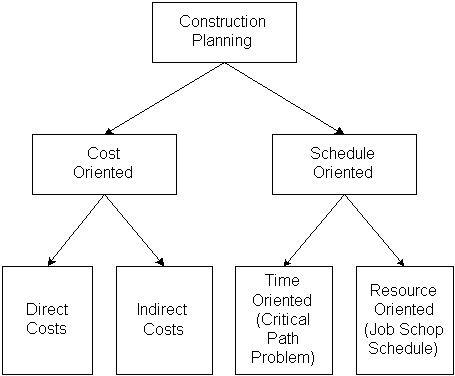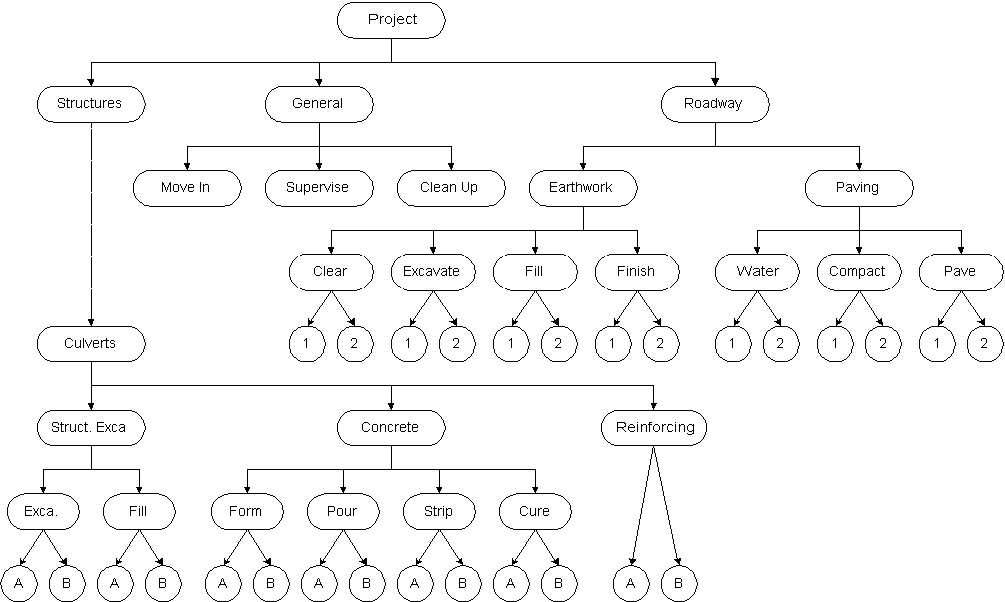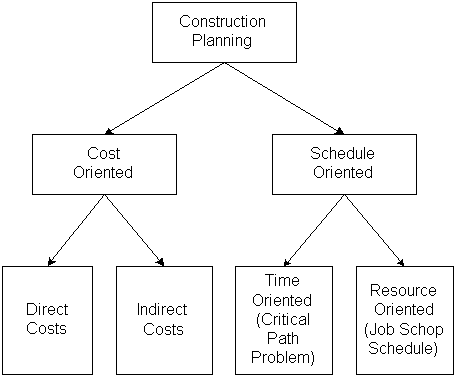Construction Planning and Scheduling: A Quick Introduction
Construction planning and scheduling are fundamental aspects in integrating all construction activities and phases required to complete a given construction project, within a given budget and deadline. Although they have individual functions, planning and scheduling are inseparable when it comes to successful project management.
Construction planning essentially covers the choice of relevant policies, procedures and processes to achieve project objectives. The construction schedule adapts your construction project action plans for scope, time, cost and quality into a functional calendar. This process of adapting project specifications, including resource requirements (labor, equipment, materials, etc.), communications, risks, and procurement into an operational workflow system, is critical for the project team.
Along with the project plan and budget, the schedule becomes the central tool for managing your projects. Additionally, having an integrated or coordinated cost-time schedule serves as a basis for monitoring and controlling activities throughout the project lifecycle.
Why construction planning and scheduling is important
Proper construction planning and scheduling is important to ensure your construction project is completed on time and within budget. A carefully planned construction schedule not only outlines the pace of your work, but also determines how it will be accomplished. It also helps you define your processes, methods, and sequences for when materials are put into place.
Preparing your construction schedule meticulously in advance maximizes your efficiency and productivity. Because your construction schedule allows you to improve your quality control measures, it's easy to sequence work and ensure you have the correct quality and quantity of materials used at each stage.
Acquiring materials and resources is on the right track as you can use your schedule to buy the right materials exactly when you need them. Safety performance improves as you use your schedule to monitor which worker is on site and ensure safety guidelines are followed correctly.
Having a reliable construction schedule also allows you to better allocate your time among everyone involved in the project, which helps them better plan their activities. By gaining full control of your project, you reduce unpleasant surprises, avoiding cost overruns and delays.
What is construction planning?
Construction planning is essential in managing and executing your construction projects, as it involves selecting technology, defining work tasks, estimating required resources and the extent of individual tasks, and identifying possible interactions and workflows. work between different activities.
An efficient construction plan is essential to define your budget and schedule for all necessary work. Creating and developing the construction plan is a highly challenging and critical task in construction management.
You have to develop the technical aspects and, in addition, make organizational decisions about the relationship between the project's stakeholders and even the subcontractors that you will have to include.
However, it’s not enough to just track and use construction data for a single project. Real estate developers especially benefit from storing their data for a long period of time. For example, one of the best reasons to maintain commercial real estate data (or commercial real estate data) is because it allows for better decision-making.
According to The Constructor, a civil engineering informational resource website, there are three main types of construction project planning:
It involves a high-level selection of project objectives. Strategic planning is usually done by the project owner's corporate planners. To achieve the owner's project objectives, they decide which project to build and the completion time with project teams developing the master construction execution plan that falls within the guidelines defined in the strategic and contracting plans.
2. Operational planning
It involves detailed planning by construction teams to meet strategic project objectives. Before project teams can detail the construction schedule, they need to go through a series of questions so they can prepare the construction master plan:
- Will the operational plan meet the strategic planning target date?
- Are there sufficient construction resources and services available within the company to meet project objectives?
- What is the impact of the new project on the existing workload?
- Where will we get the resources to deal with any overload?
- What company policies may prevent the plan from meeting its target date?
- Is there generally long-delivery equipment or materials involved?
- Are project concepts and design firmly established and ready to begin construction?
- Is the original hiring plan still valid?
- Will it be more cost-effective to use an accelerated scheduling approach?
3. Scheduling
It involves a detailed operational plan defined within a time frame in accordance with strategic objectives.
What are the first steps in planning a construction project?
The classic approach to developing a construction plan, which is the basis for modern construction planning, is based on the 1998 book Project Management for Construction by Chris Hendrickson. The common development strategy is to adopt a primary emphasis on cost control or deadline control.

Construction planning can be cost or expense oriented, or schedule oriented. With cost-oriented project planning, there is a distinction between costs incurred directly in performing an activity and indirectly in carrying out the project. Indirect costs may include loan expenses for project financing and general expenses. For schedule-oriented planning, the emphasis is on scheduling project activities over time, and this is considered critical.
Planning is focused on ensuring that appropriate precedences between activities are followed and maintained and that resource scheduling is done efficiently. This results in critical path scheduling procedures (the maintenance of continuous workflows) and job shop scheduling processes (the efficient use of resources over time). Whatever the focus of your construction planning, effective delivery, scheduling and budgeting are always intertwined and are both primary concerns.
After defining the planning emphasis, it is time to consider all other functional requirements of construction planning.
1. Choose which technology and construction methods to use . Choosing the correct technology and construction methods are critical aspects for the successful execution of your project. Your decision to make concrete structures on site or order prefabricated structures will directly affect the cost and duration of the tasks involved in the construction process. Finding the right digital solution for your project will be decisive for your team's productivity, as it will directly affect the completion time of different activities and the flow from one activity to another, reducing unnecessary administrative tasks.
2. Define work tasks and activities . Since construction planning determines the construction schedule, defining various work tasks is vital to defining the schedule for construction activities. This way, you can estimate the resources needed and time the required sequences and critical paths between tasks. Defining appropriate work tasks is tedious but a necessity in applying formal scheduling processes and standardizing specific tasks. Once the tasks have been correctly defined, a hierarchy of activities emerges that can be viewed as this example of activities in a road project plan:

3. Defining relationships and critical flow between activities . After work activities are defined, you can specify the relationships between them. Precedence relationships between tasks and activities mean that activities must happen in specific sequences. There are numerous natural sequences for construction activities due to structural integrity requirements, regulations and other technical requirements.
4. Estimating activity durations . Remember, each work activity is associated with a duration and these durations are the basis for creating the schedule. All formal scheduling depends on duration estimates as well as defined precedence relationships. A realistic estimate, along with historical records of specific tasks and activities, is essential to avoid delays.
5. Estimating resource requirements for work activities . In addition to precedence relationships and temporal durations, resource needs for each activity are also estimated. By correctly estimating resource requirements per activity based on your comprehensive definitions, specific resource requirements can also be defined for the entire project, avoiding problems with resource allocation and procurement problems.
6. Establishing a coding system . Having a coding system for each of the identified activities allows for better integration of the organization's efforts and a better flow of information. A coding system allows you to standardize definitions and categories of items and activities across projects and across project stakeholders. Coding systems also make it easier to retrieve historical data on the cost, productivity and duration of your activities. Couple this with construction management software that keeps all your data in one central location and makes your coding system even more efficient.
These steps are necessary to develop a proper construction plan and allow you to turn your plan into a schedule. Construction planning is not limited to the period after contract award. It must be an essential and continuous activity even during the design of your installation.
What are the five phases of construction?
There are five main phases in a standard construction project where construction planning and scheduling play critical roles:
- Initiation . At this stage, your project idea is evaluated to determine its feasibility and whether or not it should be carried out. This is the beginning of a project's life where project objectives are identified and defined.
- Planning . This phase includes developing the project and outlining the details necessary to achieve the project objectives. At this stage, you identify all the work that needs to be done, the tasks and resources required, and the strategy to make it all possible. Typically, a project budget is prepared by the project manager to provide cost estimates for labor, equipment, and materials. Once all the planning details have been determined, they must all be documented in a quality plan that also shows the goals, assurance, control measures, building codes and even the customer's criteria. At that point, the project would be ready for execution.
- Execution . Welcome to the implementation phase, where the project plan is put into practice on site. Project control and communication are essential during the execution phase. The project manager has the power to control the direction of the project through progress reports and activity performance. Any deviation from the plan must be addressed and corrected. The aim of action is to never deviate from the original plan, so progress should always be reported on time.
- Monitoring . The monitoring phase occurs simultaneously with the execution phase and covers all progress and performance measurements related to monitoring and ensuring that the project is progressing according to the construction plan and schedule.
- Close . Once all aspects of the project have been delivered and the client has agreed, the project is ready for closure. This phase involves all activities related to final delivery to the customer.
Conclusion
To be successful with your construction projects, careful planning is required to create a schedule that will allow you to deliver your projects on time and within budget. Both construction planning and scheduling take a lot of time to create and implement, but the time you will save during the actual work will be more than the time spent creating your plan and schedule.

